Public Programs 2013-2014
Index
38 Memory Spaces
Hand-cut stencils developed by students at the University of Applied Arts Department of Graphic Design, under the tutelage of Univ,-Lekt.Mag.Art Waltraud Jungwirth, are being sprayed onto thirty-eight sidewalks of Vienna, corresponding to 1938. Historians on the academic and advisory boards provided oversight for the selection of sites. The researched street addresses identifying sites of criminal assault, humiliation, exclusion, as well as rescue and resistance, were sprayed with the tag “Was passiert wenn wir vergessen uns zu erinnern/What happens when we forget to remember?” The phrase reoccurs in different configurations around the city in ten languages–Deutsch, Yiddish, Romani, Slovenian, Polish, Russian, Serbo-Croatian/Bosnian, Turkish, Hebrew and English. The question serves as the project axiom stimulating new conversations about National Socialism.The 38 addresses will be activated by performance artists and educators as sites for new representations of memory, developed over a period of six months. A schedule of planned performances and walking tours is posted on the project calendar on the website. and a series of walking tours of the specified sites will be available online in late winter.
![parliament-Christian[2]](http://theviennaproject.org/wp-content/uploads/2011/04/parliament-Christian2.jpg) Artists, historians, and educators will use the 38 sites to apply a variety of approaches to sponsor public engagement with the past: 1) Beginning with the history, project historians will use the web site and Smartphone app to post two paragraphs about each site, providing a concise, scientific report, substantiated by some form of documentation or primary source citation. 2) When possible, the app will also position an archival photo next to a present-day photo of the site. 3) Additional links will provide an extended discussion of each site, with anecdotes, and other forms of documentation based on primary source citations. 4) Interviews conducted by the project blogger, will investigate the site informally, canvassing the site, photographing how people respond to the site, interviewing people who live at or next to the site. 5) Community forums in neighborhoods containing sites will generate new conversations about the sites. Members of the different victim groups will be invited to join these discussions to dialogue about the past. 6) Performance artists will develop engaging, interactive performances at various sites, addressing the history. “Silent witness vigils” will also take place. 7) Student audio interviews will occur at the sites next spring, directed at interviewing pedestrians as they pass by the site. 8) Interviews with survivors who have a relationship to a particular site or neighborhood, will be recorded and uploaded to the web site and the smartphone app, as well as integrated into the thematic tours. 9) Thematic guided tours, actual and virtual, will be another vehicle for organizing the history and thinking about the past in relation to the present. 10) User-generated photos and videos produced at the site and uploaded to our Facebook album (coming soon) will provide another layer of documentation.
Artists, historians, and educators will use the 38 sites to apply a variety of approaches to sponsor public engagement with the past: 1) Beginning with the history, project historians will use the web site and Smartphone app to post two paragraphs about each site, providing a concise, scientific report, substantiated by some form of documentation or primary source citation. 2) When possible, the app will also position an archival photo next to a present-day photo of the site. 3) Additional links will provide an extended discussion of each site, with anecdotes, and other forms of documentation based on primary source citations. 4) Interviews conducted by the project blogger, will investigate the site informally, canvassing the site, photographing how people respond to the site, interviewing people who live at or next to the site. 5) Community forums in neighborhoods containing sites will generate new conversations about the sites. Members of the different victim groups will be invited to join these discussions to dialogue about the past. 6) Performance artists will develop engaging, interactive performances at various sites, addressing the history. “Silent witness vigils” will also take place. 7) Student audio interviews will occur at the sites next spring, directed at interviewing pedestrians as they pass by the site. 8) Interviews with survivors who have a relationship to a particular site or neighborhood, will be recorded and uploaded to the web site and the smartphone app, as well as integrated into the thematic tours. 9) Thematic guided tours, actual and virtual, will be another vehicle for organizing the history and thinking about the past in relation to the present. 10) User-generated photos and videos produced at the site and uploaded to our Facebook album (coming soon) will provide another layer of documentation.
Initial Sprays
24. October
11:00 Parlament/Parliament, Dr. Karl Renner-Ring 3, 1010 Wien
ao. Univ.-Prof. Dr. Stefan Hammer, Institut für Rechtsphilosophie, Religions- und Kulturrecht Universität Wien
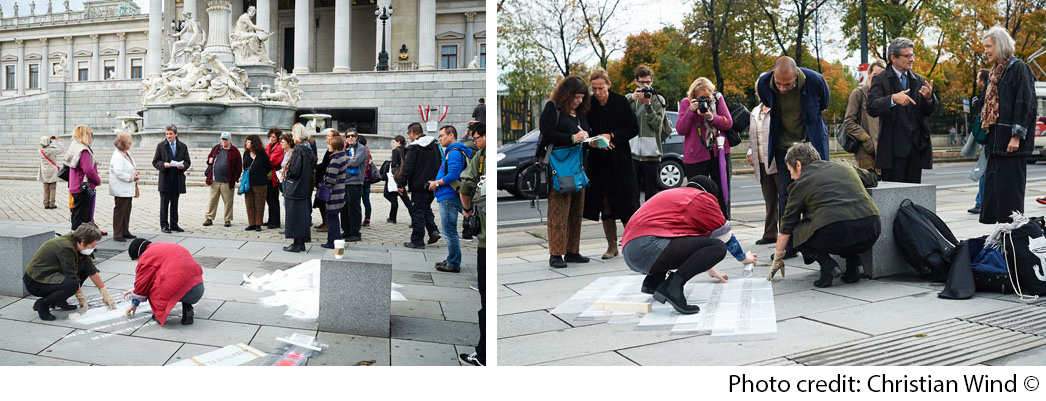
14:00 Naturhistorisches Museum / Natural History Museum, Burgring 7, 1010 Wien
Dr. in Margit Berner, Anthropologische Abteilung, Naturhistorisches Museum
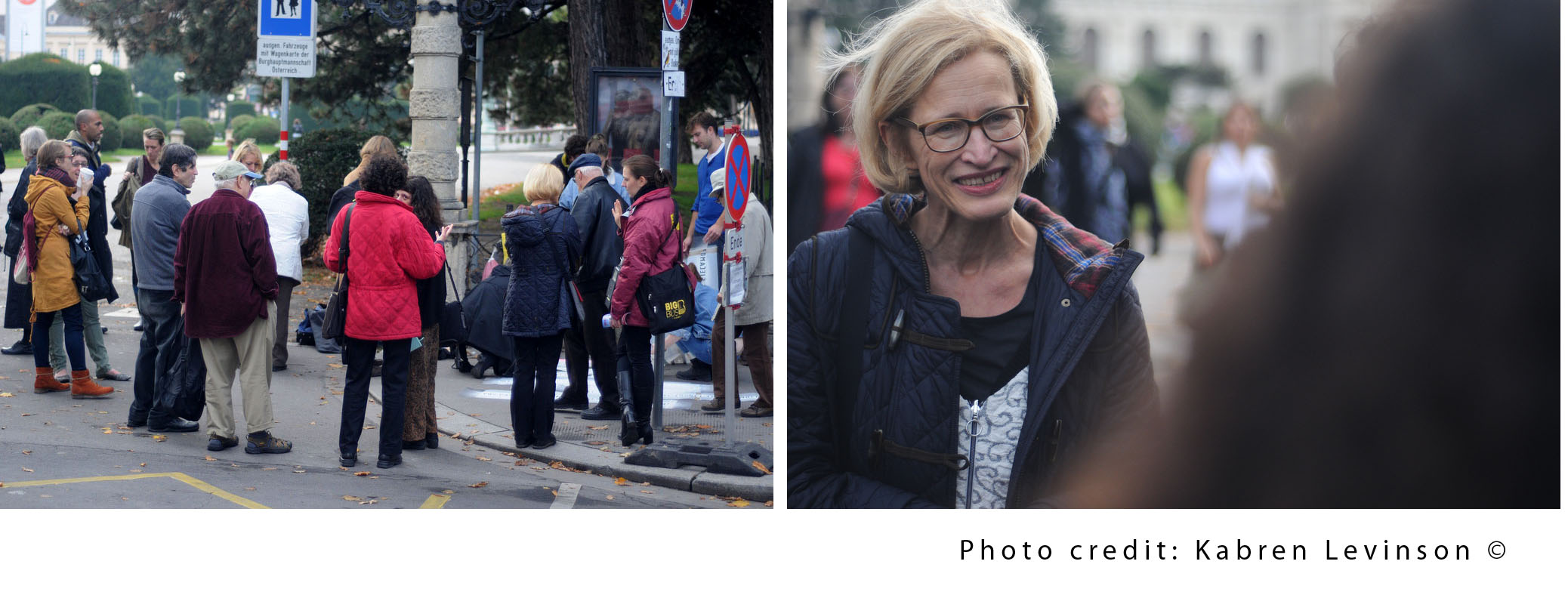 16:00 Pouthongasse 12, 1150 Wien
16:00 Pouthongasse 12, 1150 Wien
Hermine Liska, Survivor of Nazi persecution
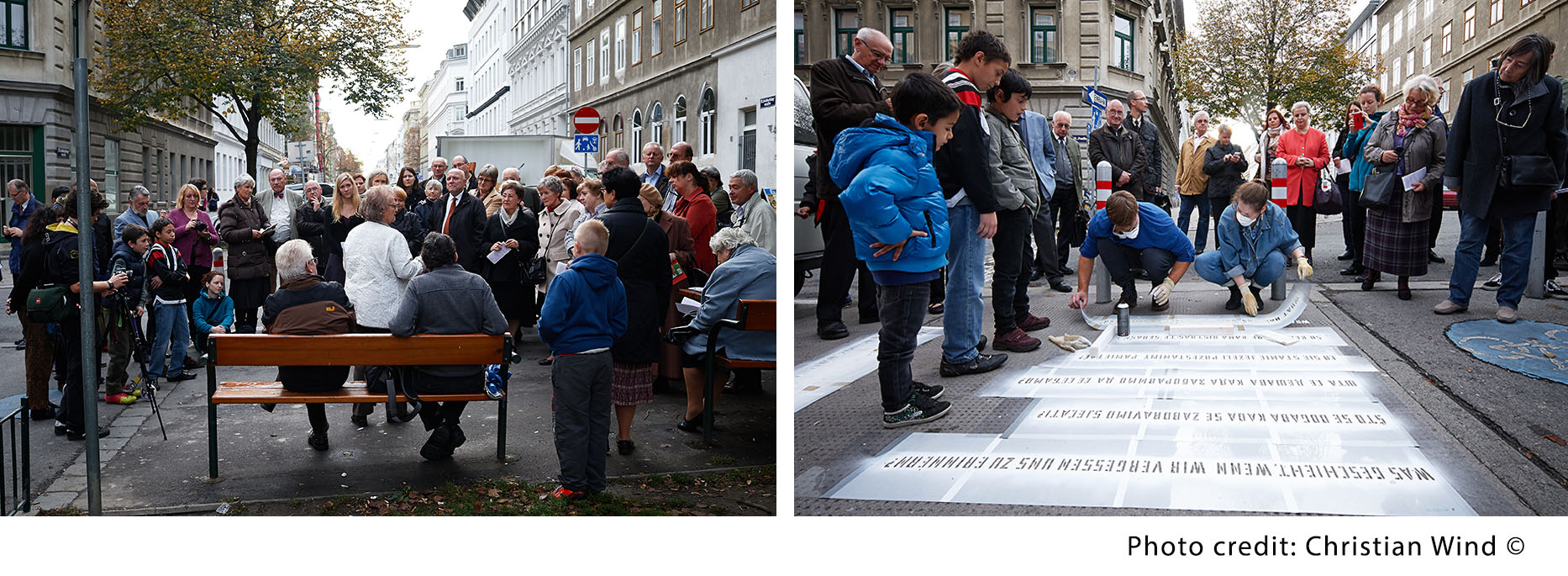
25. October
11:00 Universität Wien / University of Vienna Universitätsring 1, 1010 Wien
Mag. Dr. Phil. Stefan Wedrac, Institut für Rechts-und Verfassungsgeschichte
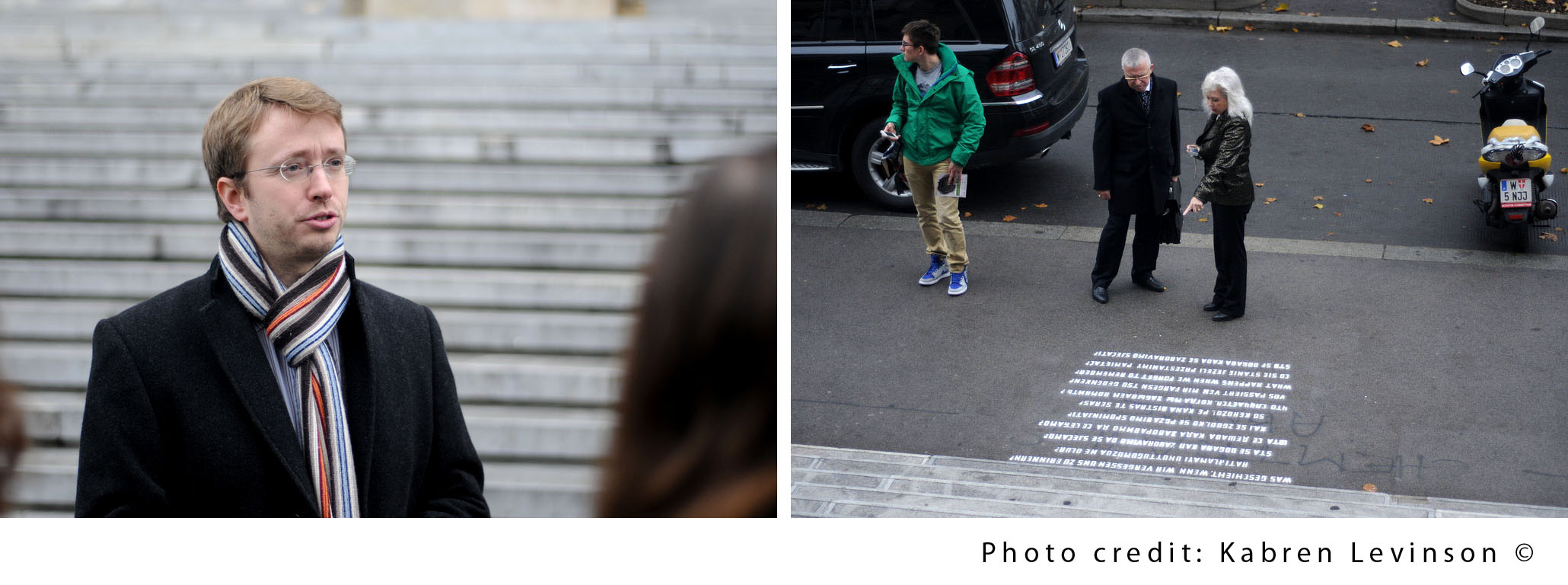 14:00 Wiener Landesgericht, Langesgerichtsstrasse 11, 1080 Wien
14:00 Wiener Landesgericht, Langesgerichtsstrasse 11, 1080 Wien
Mag. Friedrich Forsthuber, President of the Wiener Landesgericht
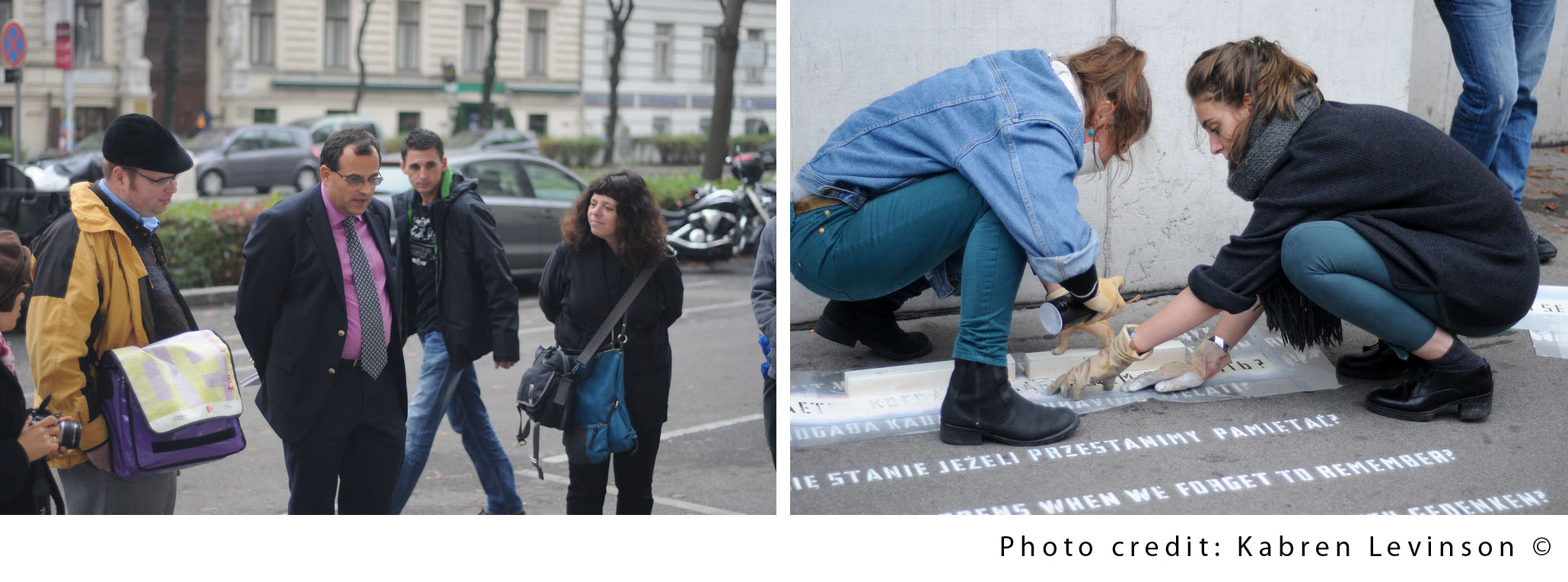
November Pogromnacht Sprays
6. November
At 14:00 on the afternoon of 6. November 2013, a memory space in front of Hamakom-Theater im Nestroyhof in the Leopoldstadt district was stenciled with a poem by award-winning poet, Robert Schindel. The Nestroyhof Theater was built by a Jewish architect, Oscar Marmorek in 1898 and home to Jewish theater until 1938, when it was closed by the Gestapo immediately following the Anschluss. Schindel was a hidden child during the Holocaust, reunited in 1945 with his mother who survived Auschwitz and Ravensbrück concentration camps. His father was murdered in the Dachau concentration camp.
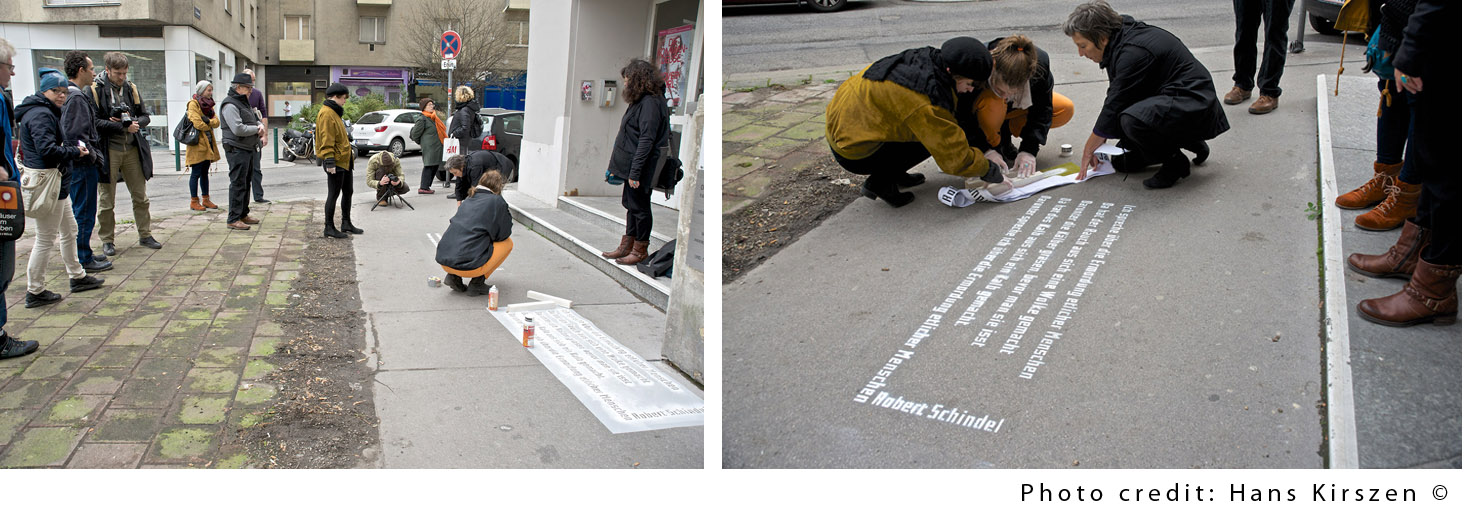
At 14:00 on 7. November, a second memory space was sprayed in front of Palais Ephrussi, at Universitätsring 14. The former home of the Ephrussi family, the address was used to symbolize the theft and plunder that took place in the homes and businesses of Jewish victims during and leading up to the November pogroms. Karen Frostig introduced a discussion about theft of Jewish property starting in 1938, and contested issues of restitution related to property theft and international law, making reference to Sophie Lillie’s writing and recent articles about looted art. This presentation was followed with a reading by actress Michaela Adelberger at 15:00, from Edmund de Waal’s book “The Hare with the Amber Eyes” (using the German translation).
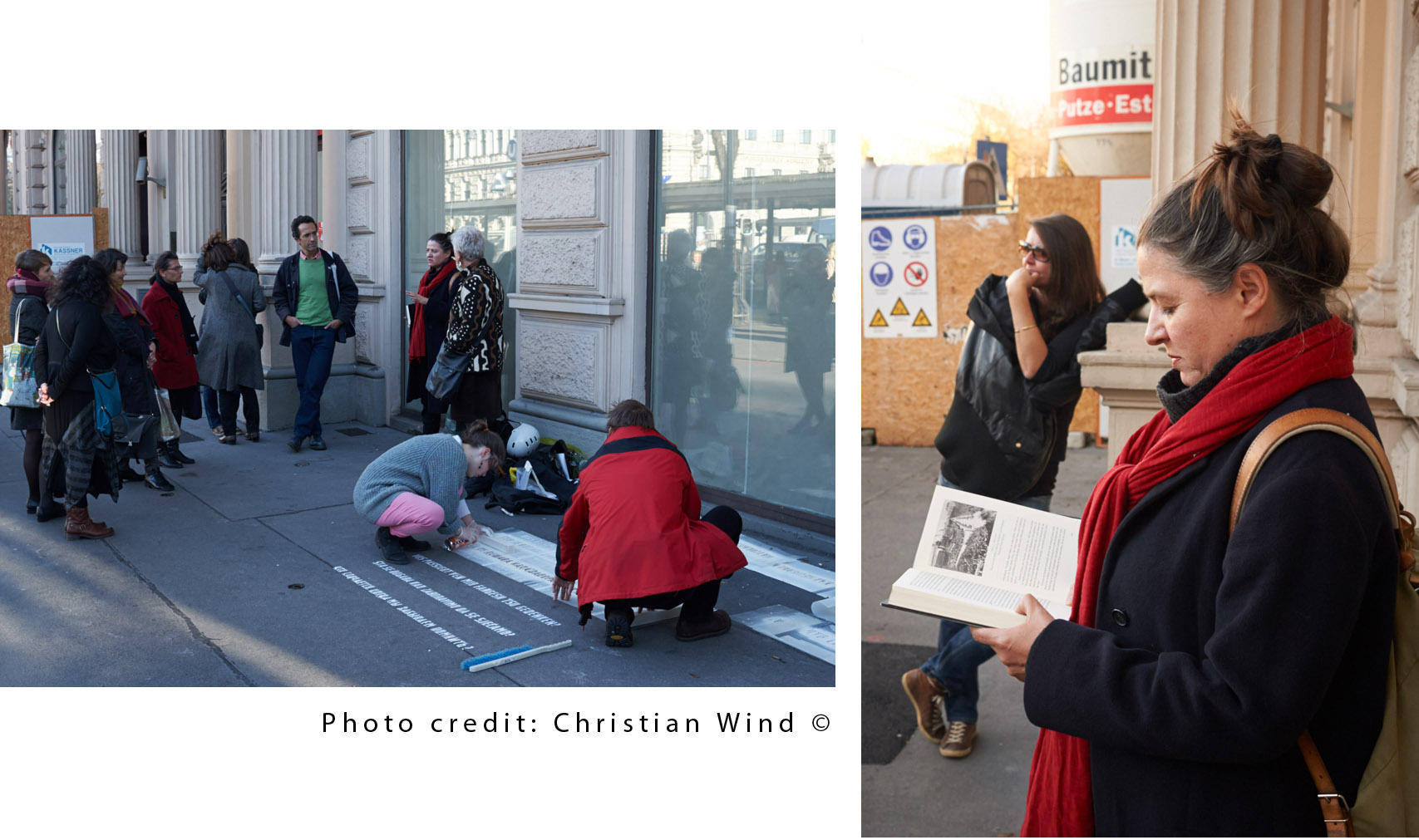 8. November
8. November
At 14:00 on 8. November, the sidewalk in front of Palais Rothschild at Prinz- Eugen-Straße 20-22, 1040 Wien was sprayed. This site became Eichmann’s Central Office for Jewish Emigration, responsible for the expulsion of 110,000 Austrian Jews beginning in August of 1938, and for the deportation and subsequent murder of 66,000 Jews living in Austria, starting as early as 1939. Doron Rabinovici, author of “EIchmann’s Jews: The Jewish Administration of Holocaust Vienna, 1938-1945” was invited to speak about the history of the site and the myth of Jewish collaboration with the Nazis.
9. November
Rescheduled for May 2014 (see closing), a video projection designed by Stefan Arztmann and using text from the project axiom “What happens when we forget to remember?” will appear on a building at a corner near the canal at Gredlerstraße/
Additional Sprays
13. November
At 9:00, students Liza Schluder and Rosa Czernin “resprayed” the stencil at the Universität Wien / University of Vienna Universitätsring 1, 1010. The stencil sprayed on October 25th was removed by cleaning services at the University. The University expressed their regret for this error and fully support the memory work of The Vienna Project. At the respraying, we discussed the meaning of memory and the concept of “dialogue.” in the public sphere.
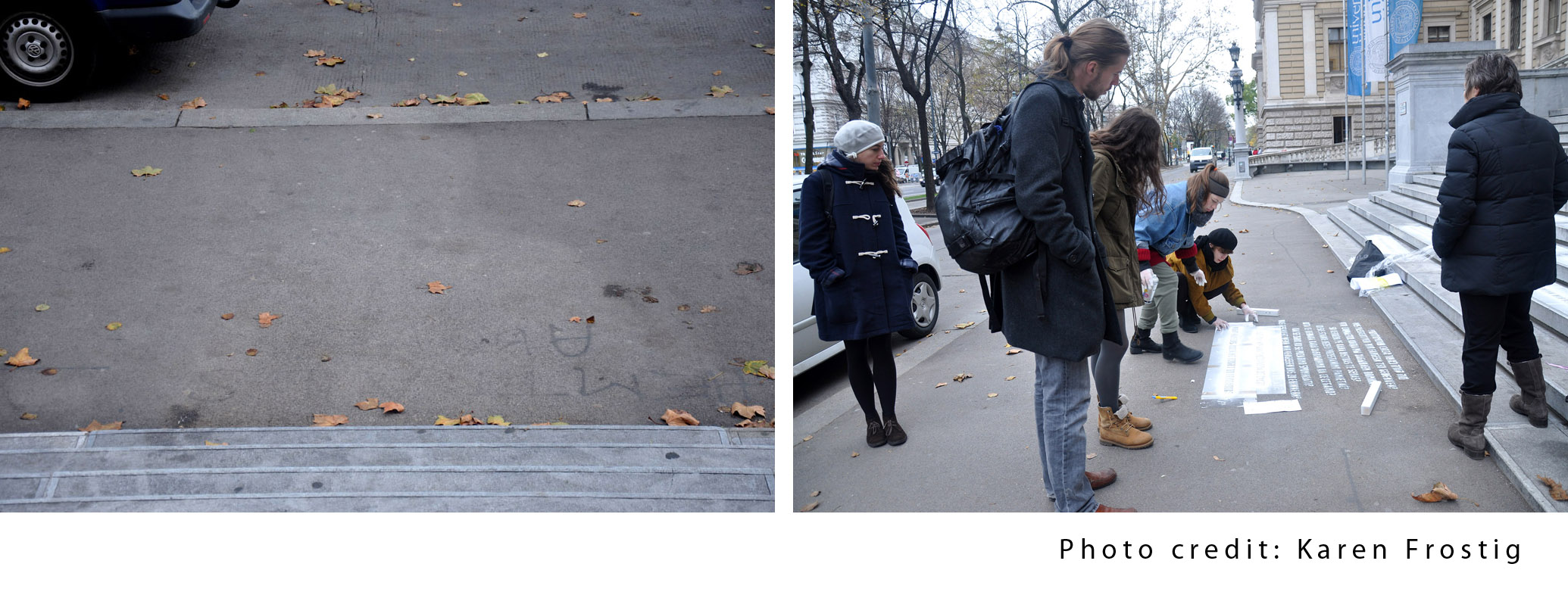
At 11:00, a spray took place at Barankapark, Hellerwiese Belgradplatz, 1100 Wien. Gilda Horvath, journalist, ORF Radio & TV broadcaster, was invited to speak about Roma history in Vienna. Dr. Jérôme Segal spoke about his work with the Roma community in a suburb of Paris, setting up numerous solidarity actions. He continued this work in Austria with Roma children from Slovakia, publishing many texts in French and German, in newspapers and professional journals to raise awareness on this issue.
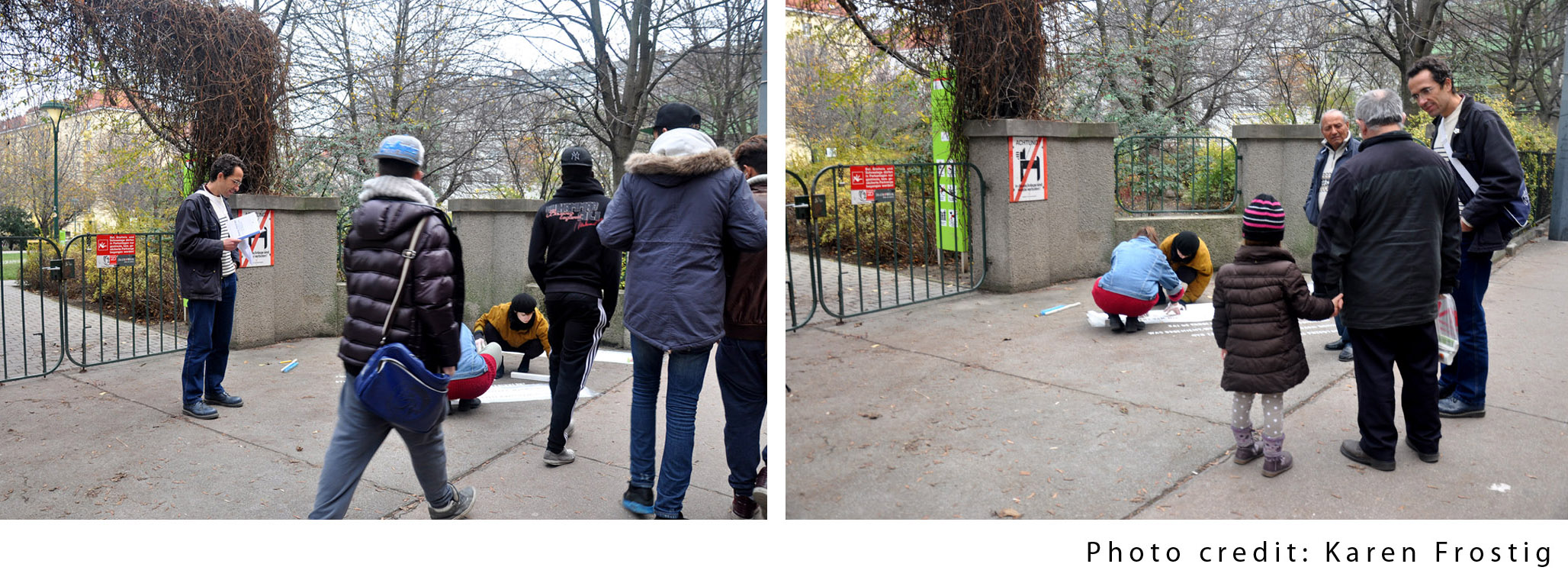
At 14:00, a second spray occurred at Gedenkstätte Steinhof/Otto-Wagner-Spital, Baumgartner Höhe 1, 1140 Wien. Speaker Friedrich Zawrel was invited to discuss his experience as a survivor of National Socialism and of two encounters with Nazi Euthanasia physician’s Dr. Heinrich Gross, administrating the Euthanasia program at Otto-Wagner-Spital.
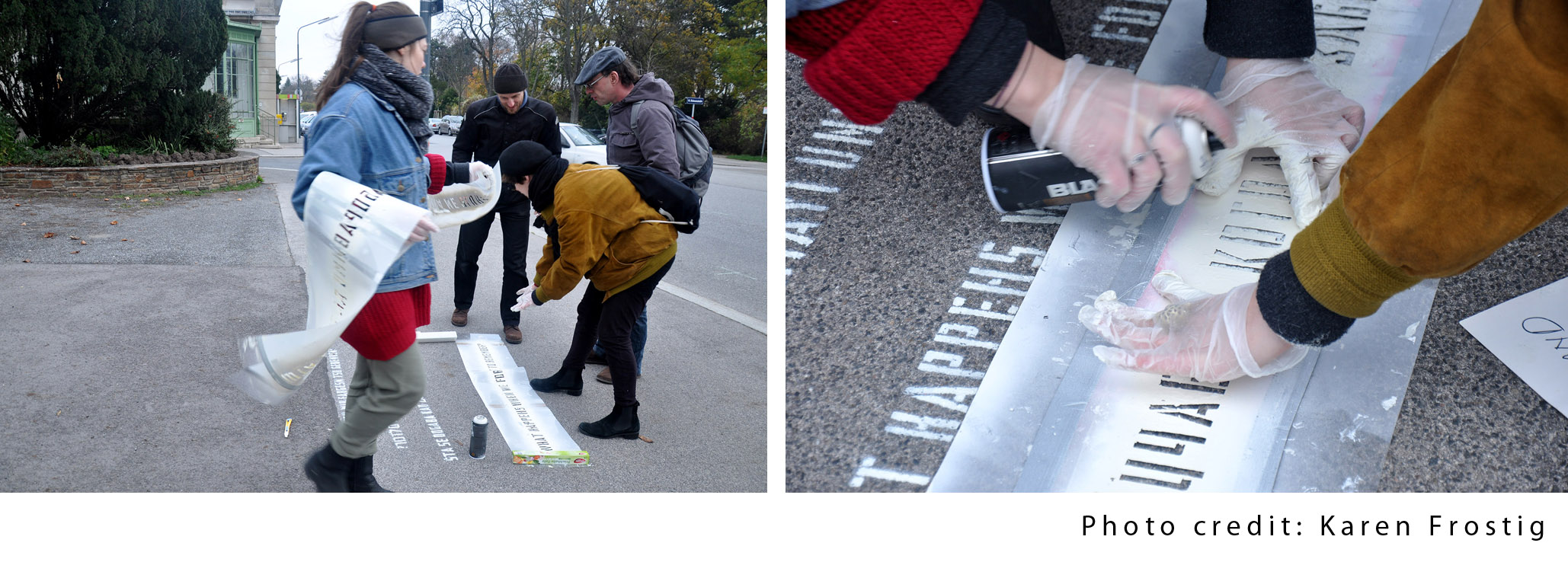
Additional Programming
Performance Art
The performance program is dedicated to learning about the interconnectedness between past and present interpersonal violence and collective violence, to prevent violence and to build mutual respect… Ildiko Meny, Curator for Performance Art
Beginning in November 2013 up to the following September 2014, the 38 Memory Spaces were activated for ten full months by various artists: performance artists, poets, musicians, installation artists, and movement troupes contracting to use the space for a public performance. Programming, developed by our performance curator, Dr. Ildiko Meny, generated a link from the past to the present, sponsoring new conversations about memory, civic courage, and the meaning of citizenship in a civil society. The performance art program addressed human rights history and drew new relationships between how the past informs the present and prepares us for the future. Performances occurred in public spaces as well as online, attracting local as well as international audiences. These events, actual and virtual, were recorded and posted on Facebook, reviewed on the project blog, and uploaded to the Smartphone app. Primarily orchestrated by Austrian artists,NGO’s and international artists whose work is related to a particular aspect of The Vienna Project, were also invited to use the space.
The Vienna Project Performance Program was designed as an open opportunity for artists and interested people to use the 38 Memory Spaces for various “actions” according to the project’s main theme of remembrance. Please see calendar for an overview of the project’s public performances.
25.November-10.December 2013 “Hair-Code” online exhibition curated by Ildiko Meny
Hairstyle, Haircut and “Hair-code” are undergoing various changes and trends within history. To wear long or short hair, beards or braids is connected to social changes, religion, religious rituals or simply by the availability of means to cut and dress. When Prussian male soldiers cut their braids off due to a new order, the saying “ this is an old braid” refers to the “change of style” since then. Both sexes, male and female used to have long or short hair within different historic periods and cultures. Consequently the social pressure to wear a certain hairstyle or to even have cut peoples hair when incarcerated can be seen a violent act against personal rights. When women or children are beaten up, men often violently tear and hold them on their hair. The Vienna Memory Project commemorates violent acts and murder and therefore we commemorate the people, who before loosing their lives in concentration camps had their hair shaved to be humiliated. Participants: Dwora Fried-Dreilinger, Nora Jacobs, Ethan Shoshan, Sonya Rapoport, Jody Wood, Kirsten Marie Thingsten, Monkey Teeth, Anthony Wills Jr., Daniel Johnson, Donna Henes, Brenda Oelbaum, Jonathan Vaughan, Priscilla Otani, Pamela Simonton, Arlee Leonard, Naoe Suzuki, Moya Devine, Adrienne Outlaw, Harley Spiller, Susan Feldman, Marcia Pitch, T, Alyne, Elaine Alibrandi.
2.January 2014 “Silent Witness Vigil” 17:00, with Ildiko Meny, Hamakom-Theater im Nestroyhof, 1020 Wien
SILENT WITNESS VIGILS, every first Thursday of the month around 17:00. Meet at the sprayed sites close to your community: Bring a candle and REMEMBER! Please also share some thoughts about this in our Facebookgroup page if you like.
27.January.2014 “Erasure” 12:00, Performance with Prof. Dr. Karen Frostig, at the memory space in front of Universität Wien, Universitätsring 1, 1010 Wien, or inside front foyer –Holocaust Remembrance Day
Human erasure is a violent act. The performance “Erasure” occurs on Holocaust Remembrance Day. The Nazi-takeover of the University of Vienna began on 12. March 1938. University records indicate that “more than 2,700 mostly Jewish affiliates of the University of Vienna were dismissed and subsequently driven away and/or murdered – professors, lecturers, students and administration employees.” Frostig’s father, a graduate of the university’s law school was expelled from his internship in the courts and prevented from taking the law boards. “Erasure” invited students and pedestrians to join in the physical action of erasing, while discussing erasures of the past and the present. Erasers imprinted with the question “What happens when we forget to remember?” were distributed to participants.
27.January 2014 “Vergessen I Erinnern” 15:00 bis 17:00, Performance with Prof. Dr. Ferdinand Schmatz, Prof. Esther Dischereit, and Zsuzsanna Balla. Prinz-Eugen-Straße 20-22, 1040 Wien (Eichmann’s Central Office for Jewish Emigration)–Holocaust Remembrance DayLong since the symbols of a dictatorship have been replaced by images of democracy, memories continue to inhabit the space in and around Prinz-Eugen-Straße 20-22. Students of the Institute of Language Arts at the University of Applied Arts will work with Hungarian writers to develop “Vergessen I Erinnern.”
At 20 clock a reading and discussion will take place at Librería Utopía – radical bookstore in Vienna 15, Preysinggasse 26-28 (U3 Schweglerstrasse )
27.January 2014 From our Honorary Board member Edmund De Waal: 19:00 Edmund de Waal, Kunsthistorisches Museum Wien, Cupola Hall, Maria-Theresien-Platz, 1010 Vienna
Sabine Haag, Director General of the Kunsthistorisches Museum, invites you to the first in this year’s series of talks and conversations with artist Edmund de Waal.
6.February 2014 “Silent Witness Vigil” 16:00, Community groups invited to find a memory space in your community to occupy for one hour. Please forward documentation photos to ildiko@theviennaproject.org for blog posting.
6. March 2014 “Silent Witness Vigil”14:30 Silent vigil with Ildiko Meny at Hamankom Theater.
7.March.2014 “Plant a Pansy” 15:00, with Johanna Maria Taufner and Ildiko Meny with Andreas Brunner at Resselpark. Meeting point is metro Entrance Technical University.
Staged performance to remember Homophobia which took place there.
21.March.2014 “Move the World”, 14:00, Naturhistorisches Museum / Natural History Museum, Burgring 7, 1010 Wien–World Against Racism Day (postponed to May 8th)
An initiative to enhance empathy through Movement.
1.April, 2014 Guided Tour 15:00 with Kate Melchior “Highlights of the Ringstrasse Revisited.” Registration on RSVP form
3.April 2014 “Silent Witness Vigil” 19:00, Community groups invited to find a memory space in your community to occupy for one hour. Please forward documentation photos to ildiko@theviennaproject.org for blog posting.
5.April 2014Guided Tour 15:00 with Kate Melchior “Political Systems: National Socialism in Vienna”. Registration on RSVP form
7.April 2014 Guided Tour 15:00 with Kate Melchior “Highlights of the Ringstrasse Revisited.” Registration on RSVP form
8.April 2014, 19:00 Performance: Silent Witness Vigil with Johanna Taufner, Romaplatz, am Bruckhaufen, 1210 Wien for International Romani Day
11.April 2013, 15:00-17:00 Performance: Artist Phillip Reichel presents “Grandfather Interrogations” open reading and discussion im DÖW-Gedenkraum, Salztorgasse 6 (back entrance of the former Gestapo headquarter).
25.April 2013, 15:00-17:00 Performance: Artist Phillip Reichel presents “Grandfather Interrogations” open reading and discussion im DÖW-Gedenkraum, Salztorgasse 6 (back entrance of the former Gestapo headquarter).
25.April 2014 Guided Tour 15:00 with Kate Melchior “Jewish Neighborhoods”. Registration on RSVP form
27.April 2014 Guided Tour 15:00 with Kate Melchior “Political Systems: National Socialism in Vienna”. Photo by Bianca Ioanidia.
29.April 2014 19:00 Film “City without Jews” Film (1924); Venue: Jewish Museum Wien. Silent movie with live music by Hannes Löschl. Participants: Günter Krenn (Austrian Film Archive), Georg Traska (The Vienna Project), and Jerome Segal (The Vienna Project). Program developed in partnership with Prague Multicultural Center. Photos © Jewish Museum Wien/Sonja Bachmayer
1.May 2014 Guided Tour 15:00 with Kate Melchior “Jewish Neighborhoods”. Registration on RSVP form
6.May 2014 Performance: Preview of “Read-a-Thon,” scheduled for October, reading archival letters at two sites. The University of Vienna at 14:00 and Hamakom Theater at 15:00.
8.May 2014 16:00 Guided Tour with Peter Mlczoch and Walter Juraschek, “Destroyed Jewish Culture in the Second District” in partnership with Gebietsbetreuung. Starting point: 2., Tempelgasse 5
8.May 2014 16:00 Performance: “Move the World”; Naturhistorisches Museum; Burgring 7, 1010 Wien; with Nathalie Sandoval teaching „hub dance“
9.May 2014 12:00 Guided Tour with Kate Melchior “Jewish Neighborhoods”. Registration on RSVP form. Meeting place: in front of the Nestroyhof Theater at Nestroyplatz 1, 1020
19.May 2014 17:30 Guided Tour with Kate Melchior “Political Systems: National Socialism in Vienna.” Registration on RSVP form. Meeting place: in front of the Russian Monument
26.May 2014 18:00 Performance: “Memory Games,” a zine and presentation with artist Nina Prader; Tempelgasse 5, 1020 Wien; held in conjunction with “Paths of Remembrance” by ESRA
Nina Prader has created “Memory Games,” a simple dialogical game based on 80 sets of cards with painted images, designed to trigger an interpersonal exchange about the memory of the Nazi era.
27. August2014 18:30-21:00 at Bethaus Marpe Lanefesh/Campus Universität Wien. Performance: “Well of Remembrance” with Israeli performance artist Ossi Yalon, introducing a humanistic approach to memory.
Closing Calendar
17.October 2014 9:00-10:00 Performance:Reading Marathon of archival letters by victims of National Socialism in multiple districts. Scheduled sites:
Sites reserved:
1) Parlament: Frau Prof. Karin Riegler: GRG 19, Billrothstrasse, 19. Bezirk
2) Universität Wien: Dr. Brent Levinson und Ruth Wolman
3) Wiener Staatsoper: Dr. Karen Frostig, Project President, Peter Mlczoch, Lara and Faith Eliora Bayode
4) Morzinplatz: Herr Prof. Johannes Dressel: BG BRG 22, Contiweg, 22. Bezirk
5) Naturhistorisches Museum: Felix Dennhart, Student, Universität Wien
7) Palais Ephrussi: Melissa Hacker, Filmmaker, President “Kindertransport”
8) Stadttempel: Dr. Shulamit Reinharz and Wanya F. Kruyer Bloemgarten
10)Volkstheater: Herr Prof. Alexander Von Spinn: BRG 7, Kandlgasse, 7. Bezirk
12) Theater Nestroyhof: Frau Prof.Splbrit Greschonig, GRG 2, Zirkusgasse, 2. Bezirk
14) Talmud-Thora-Schule – Altes Jüdisches Museum (an der Adresse des Jüdischen Museums
Wien, Dorotheergasse 11): Pädagogische Direktorin Hannah Landsmann and Katie Herzog
15) Aspang Bahnhof: Frau Prof. Heike, Evangelisches Gymnasium und Werkschulheim,
Erdbergstraße, 10 Bezirk
16) Palais Rothschild: Frau Margareta Prof. Windsperger: GRG 5, Rainergasse, 5. Bezirk
17) Resselpark: Lui Fidelsberger und Moriz Yvon von HOSI Wien
18) Synagoge Schmalzhoftempel: Tilmar Hansen, Karin von Trotha, and Julis von Trotha
19) Marchettigasse: Frau Prof. Maria Finz-Lucchi, Herr Prof. Bauer: BG und BRG 6, Rahlgasse, 6. Bezirk
20) Warenhaus Gerngross: Frau Prof. Vera Cerha: BRG 7, Kandlgasse, 7. Bezirk
21) Wiener Landesgericht: Frau Prof. Sigrid Friedl-Neubauer: Austrian International Schools,
Nordbahnanlage, 21. Bezirk
22) Justizanstalt Josefstadt: Georg Bauer
26) Heim für Mischehepaare: Frau Prof. Claudia Gerhartl, Schüler/innen und Werkcollege WUK, Währingerstraße, 9. Bezirk
29) Barankapark: Frau Prof. Ulrike Wittich: NLS, Laaerberg, 10. Bezirk
30) Jagdschlossgasse: Frau Prof. Gabriele Lang-Czedik, BRG ORG 23, Anton
Krieger Gasse, 23. Bezirk
31) Penzingerstr.: Herr Prof. Roland Marschner: BG und BRG 13, Fichtnergasse, 13. Bezirk
32) Gedenkstätte Steinhof: Jude Stratton
37) Gentzgasse: Frau Prof. Claudia Soukup: BG 18, Klostergasse, 18. Bezirk
38) Romaplatz: Herr Prof. Christof Rami, NMS und JHS Konstanziagasse, 22. BezirkDOCUMENTATION OF READINGS: Alexandra Thompson, Karin Rosenthal, Kabren Levinson, Barbara Merson, and Mathias Janko
18.October 2014 19:30-22:00 Performance: Video projection on corner near the canal at Gredlerstraße/ Lilienbrunngasse, 1020 Wien, with artist Stefan Arztmann
18.October 2014 19:30 Closing Ceremony: Österreichische Nationalbibliothek/Austrian National Library at Hofburg Palace, moderated by Dr. Rubina Möhring, welcoming remarks by Dr. Johanna Rachinger, Dr. Karen Frostig, President Oskar Deutsch, Minister Gabriele Heinisch-Hosek, and First Lady Margit Fischer; with speakers and artists Nikolaus Gansterer, author Doron Rabinovici, historian DDr. Prof. Oliver Rathkolb and Rektor Gerald Bast. Contemporary music pertinent to this period provided by Dieter Flury, principal flutist for Wiener Philharmonker with solo clarinetist Matthias Schorn, Clemens Horak (oboe) and Benedikt Dinkhauser (Bassoon). Refreshments by Ottakringer Brauerei.
18.October 2014 21:00-midnight Naming Memorial: Projections at Josefsplatz, Artistic director Karen Frostig with video artist Elisabeth Wildling and technology specialist Georg Reisch, and in cooperation with Pani Projection and Lighting Vertriebs GmbH. Photo credit: Axel Wolf Bierbaum.
Post-Project Programming
3. November 2014, 17:00-20:30 Installation of The Vienna Project’s “Memory Map,” created by Nikolaus Gansterer at the Jewish Museum Wien, followed by a panel presentation, with Karen Frostig, Nikolaus Gansterer, Danielle Spera, and Werner Hanak
16. January 2015 “Memoires de passeurs, passeurs de memoires”
Institute für Soziologie, Universität Wien
Jérôme Segal, Historian, The Vienna Project
1090, Rooseveltplatz 221. January 2015 Book Reception from TVP Performance Programm “Vergessen I Erinnern” at MuseumsQuartier (MQ) 19:00, on Holocaust Remembrance Day
Begrüßung
Gerald Bast Rektor der Universität für angewandte Kunst Wien, Ferdinand Schmatz Institut für Sprachkunst, Universität für angewandte Kunst Wien
Es lesen
Esther Dischereit, Maria Oberrauch, Saskia Warzecha, und andere
To order the book go to http://www.degruyter.com/view/product/453742?result=1&rskey= 2GCBkR 26. February 2015 12:30
Karen Frostig, Founding Director
“What Happens When We Forget to Remember?”
Women’s Studies Research Center
Epstein Building, Brandeis University, Waltham, MA USARachel Hirschhaut. ( 27 February 2015). Lecture Explore Holocaust Remembrance in Austria, Editorial. Brandeis Hoot, p. 11. Retrieved from http://brandeishoot.com/2015/02/27/lecture-explores-holocaust-remembrance-in-austria-2/
18. March 2015 10:00
Jérôme Segal, Historian, The Vienna Project
Jewish Museum Wien
Dorotheergasse 11, 1010 WienFrostig, K. (Spring 2015). Goodbye, Vienna Project: Yearlong commemorative project ends with spectacular projection. Austrian Studies Magazine, 27,22-23. Retrieved from http://www.cas.umn.edu/assets/doc/spring2015ASNweb-2.pdf
27. March 2015 “Return: A tentative story about transformation”
Karen Frostig, Founding Director
Crossing Borders — Blurring Borders
Annual Conference of the Austrian Studies Association
University of Michigan-Dearborn, Michigan15. April 2015 12:30-6 pm
Jérôme Segal, Historian, The Vienna Project
Intercultural Memory in the Public Space
Multicultural Centre Prague
Drtinova 557/10, Prague 5–SmichovMay 2015 Memories under the Microscope
Excursions with Ildiko Meny, 16:00-20:00
Contact: Ildiko_meny@hotmail.comJune 2015 “Cultivating Memory in an Urban Setting”
Karen Frostig, Founding Director
Interdisciplinary Approaches to Contemporary Social Change
Tenth International Conference on Interdisciplinary Social Sciences
University of Split, CroatiaJuly 2015 “Negotiating the Culture of Public Memory in Vienna”
Karen Frostig, Founding Director
Comparative Analysis of 20th Century Genocide
The Twelfth Meeting of the International Association of Genocide Scholars
American University of Armenia, Yerevan, ArmeniaTBC 2016 Performance: Video projection on corner near the canal at Gredlerstraße/ Lilienbrunngasse, 1020 Wien, with artist Stefan Arztmann
TBC 2016 Academic Symposium: “The Vienna Project: Challenges of Representation Regarding Multiple Victim Groups,” in partnership with the Wien Museum and the Wiesenthal Institute
TBC 2017 19:00 Academic Symposium: “Using Technology to Sponsor New Methodologies of Remembrance” in partnership with the Austrian Cultural Forum in NYC
Partnership with Multicultural Center Prague/ Multikulturní centrum Praha
We are pleased to announce a partnership with the Multicultural Center Prague: the “City without Jews project” funded by the EU grant: EACEA – Europe for Citizens programme. Dr. Jérôme Segal, our lead historian in developing the 38 sites, and in charge of content management for our Smartphone app, represents The Vienna Project in this exciting new development. The shared focus of the partnership concerns our mutual mapping projects and the plan to show “City without Jews,” an Austrian film made in 1924 by H. K. Breslauer, based on the book of the same title by Hugo Bettauer.
29.April 2014 The silent film “City Without Jews” will be shown at the Jewish Museum Vienna, and will include live music by Hannes Löschl. Participants: Günter Krenn (Austrian Film Archive), Georg Traska (The Vienna Project), and Jérôme Segal (The Vienna Project). Program developed in partnership with Prague Multicultural Center.
Di. 29. April um 19 Uhr Vorführung mit Podiumsdiskussion Die Stadt ohne Juden von Hans Karl Breslauer (1924)
Mit Livemusik von Hannes Löschl (Hammond Orgel) Teilnehmer: Günter Krenn (Filmarchiv Austria), Georg Traska (Institut für historische Intervention) und Jérôme Segal (The Vienna Project) Was passiert, wenn alle Juden einer Stadt abgeschoben werden? Diese Fiktion, nach dem gleichnamigen Roman von Hugo Bettauer (1922) lässt sich heute aus vielen unterschiedlichen Richtungen betrachten…
Jüdisches Museum, Dorotheergasse 11, 1010 Wien, In Zusammenarbeit mit The Vienna Project und dem Multikulturellen Zentrum in Prag (Multikulturní Centrum Praha) Eintritt frei – Reservierung unter <jerome.segal@theviennaproject.org> empfohlen
The Vienna Project Tumblr Blog and Facebook
Social media manager, Johanna Taufner in charge of our Facebook and Twitter accounts, has developed a Tumblr blog that captures the public experience of the project as it unfolds on the streets of Vienna. Peppered with interviews, video documentation, and a flurry of photos, the blog produces a visual portrait of the project with commentary in German, that can be accessed all over the world. The blog reflects new ideas about the art of memorialization for 21st century audiences. Our Facebook page provides ongoing project updates and postings of related news items. Our followers grow day by day surpassing the 1,000 mark! Please join our network and remember the past together.
![facebook [1]](http://theviennaproject.org/wp-content/uploads/2011/04/facebook-1.jpg) The Vienna Project is dedicated to creating a participatory practice of memory and memorialization that represents multiple points of view and brings the past into alignment with the future.
The Vienna Project is dedicated to creating a participatory practice of memory and memorialization that represents multiple points of view and brings the past into alignment with the future.
![homepage image[1]](http://theviennaproject.org/wp-content/uploads/2011/04/homepage-image13.jpg)
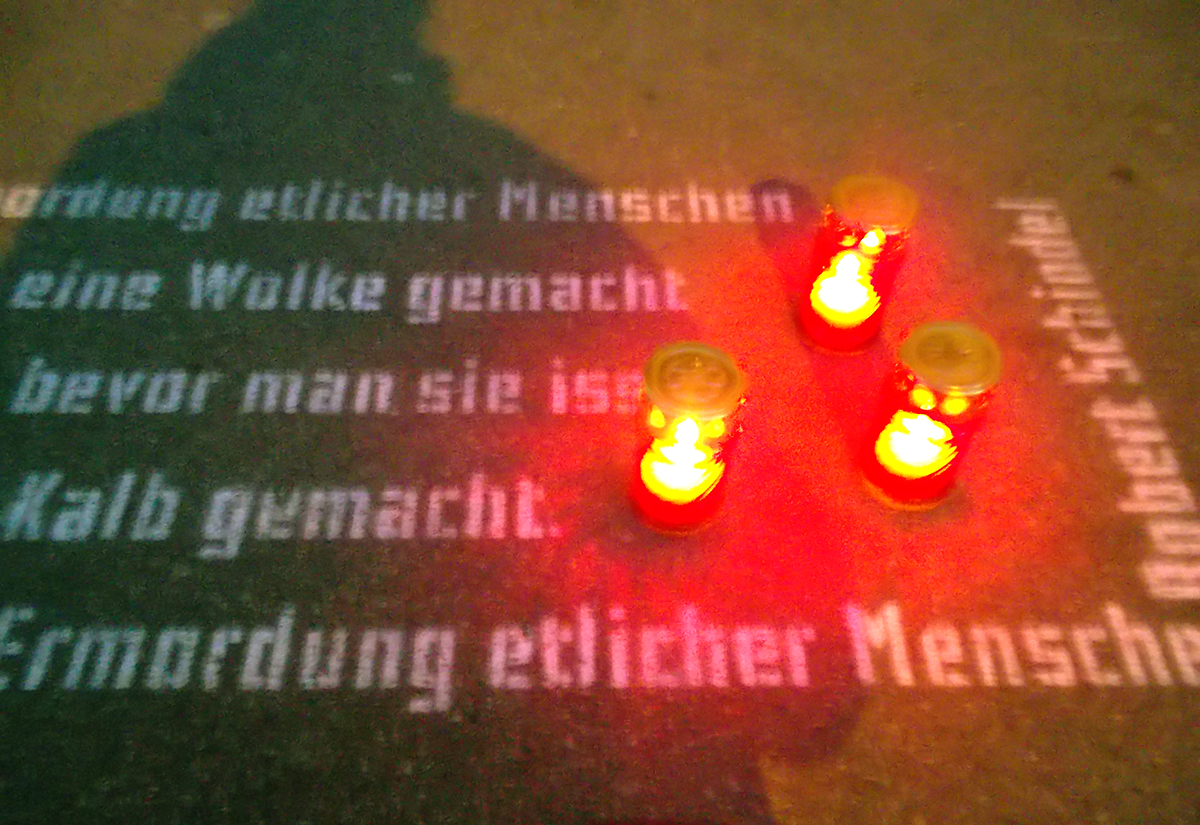
![Erasure[lo-res]](http://theviennaproject.org/wp-content/uploads/2011/04/Erasurelo-res1.jpg)
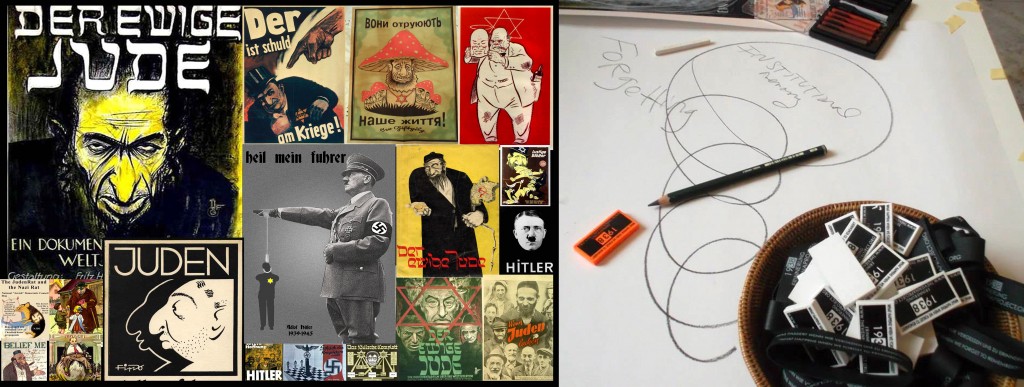
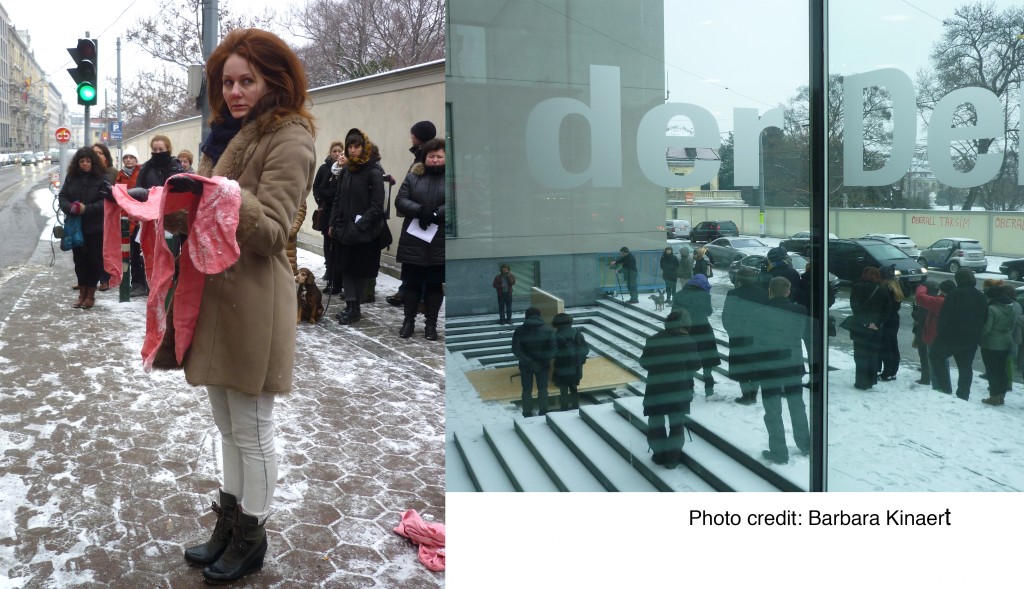
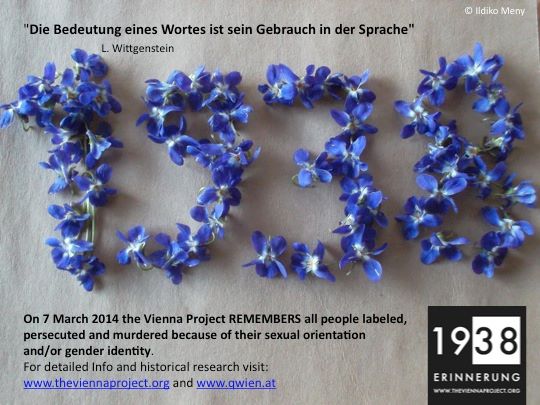
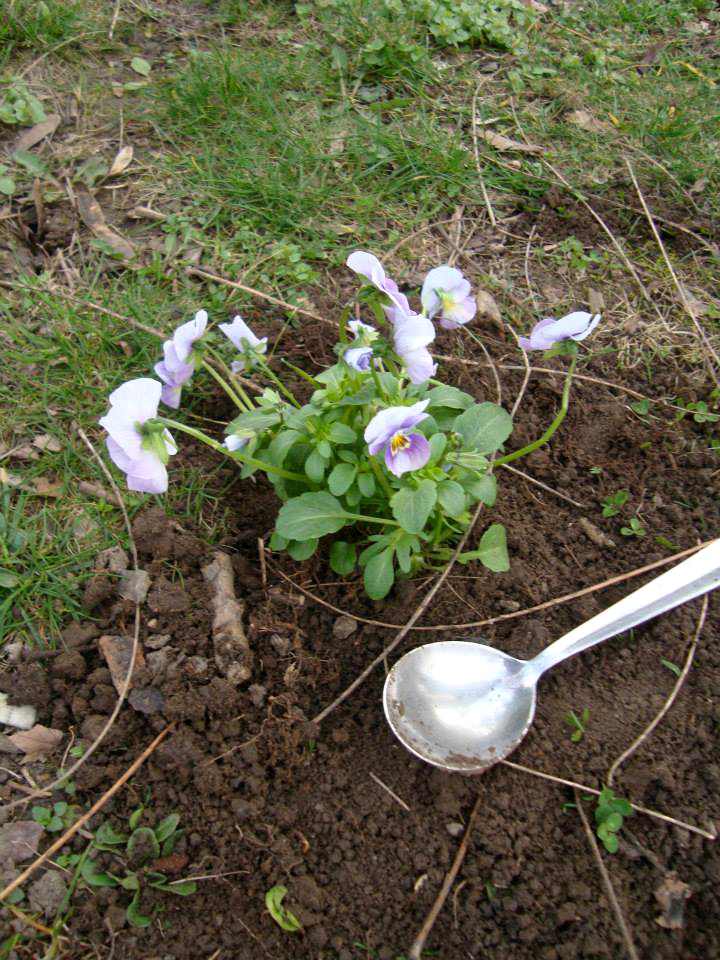
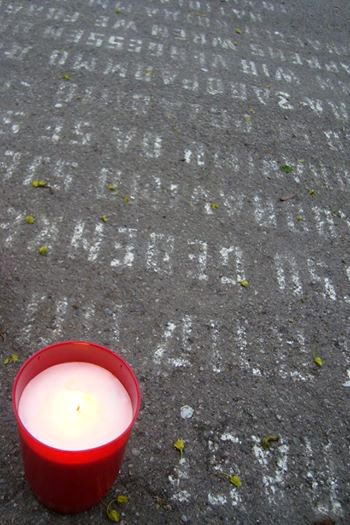
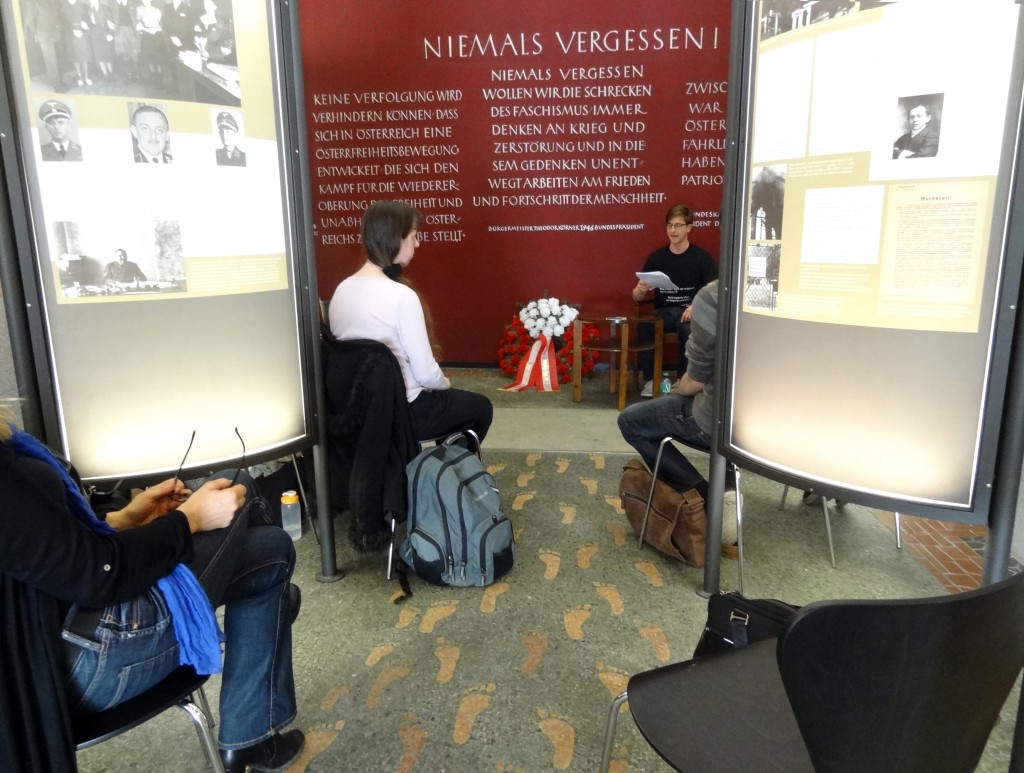
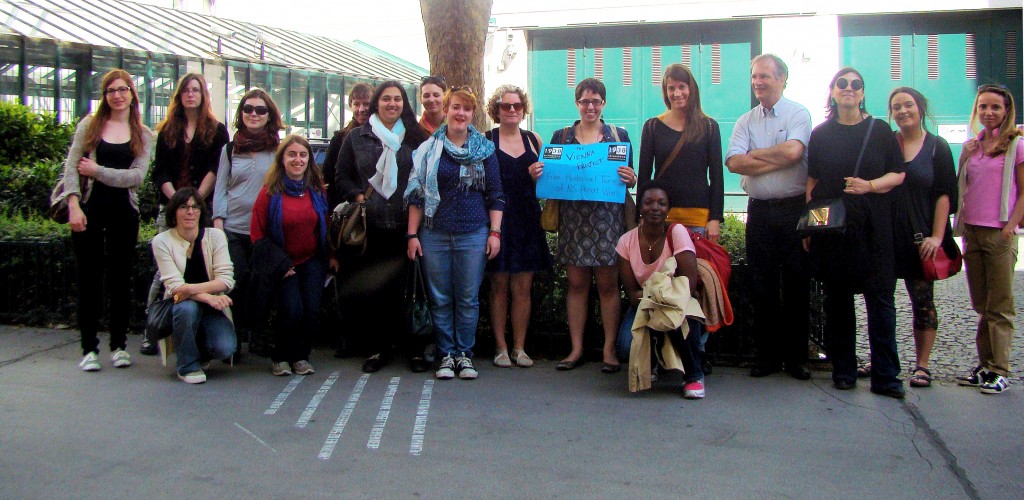
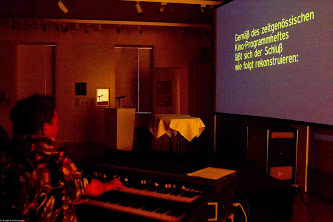
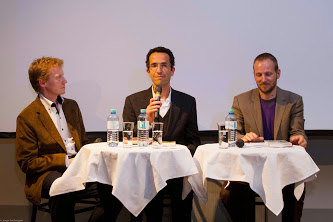
![one image-2nd district[sm]](http://theviennaproject.org/wp-content/uploads/2011/04/one-image-2nd-districtsm.jpg)
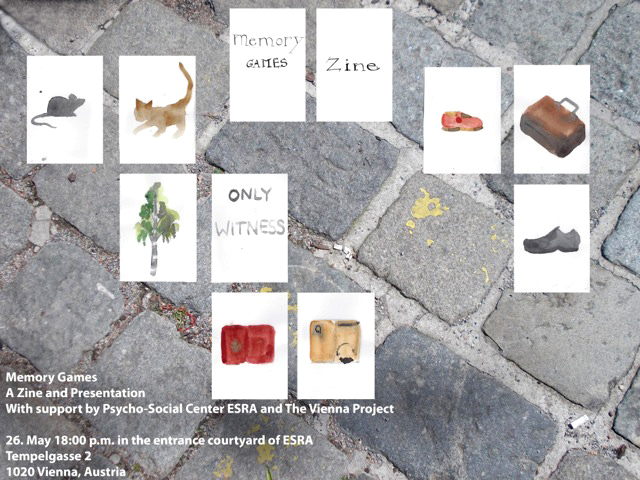
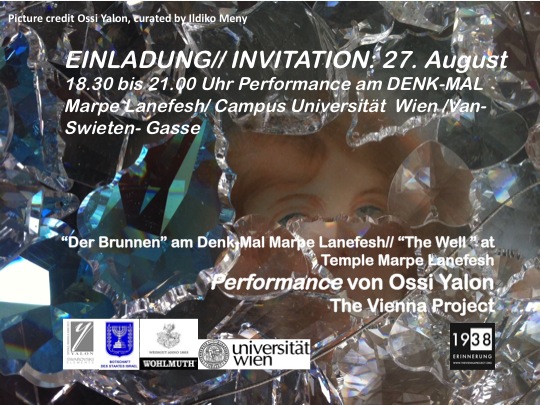

![Invitation card[6]-Deutsch-s](http://theviennaproject.org/wp-content/uploads/2011/04/Invitation-card6-Deutsch-s-1024x662.jpg)
![P1090789[72]](http://theviennaproject.org/wp-content/uploads/2011/04/P109078972.jpg)
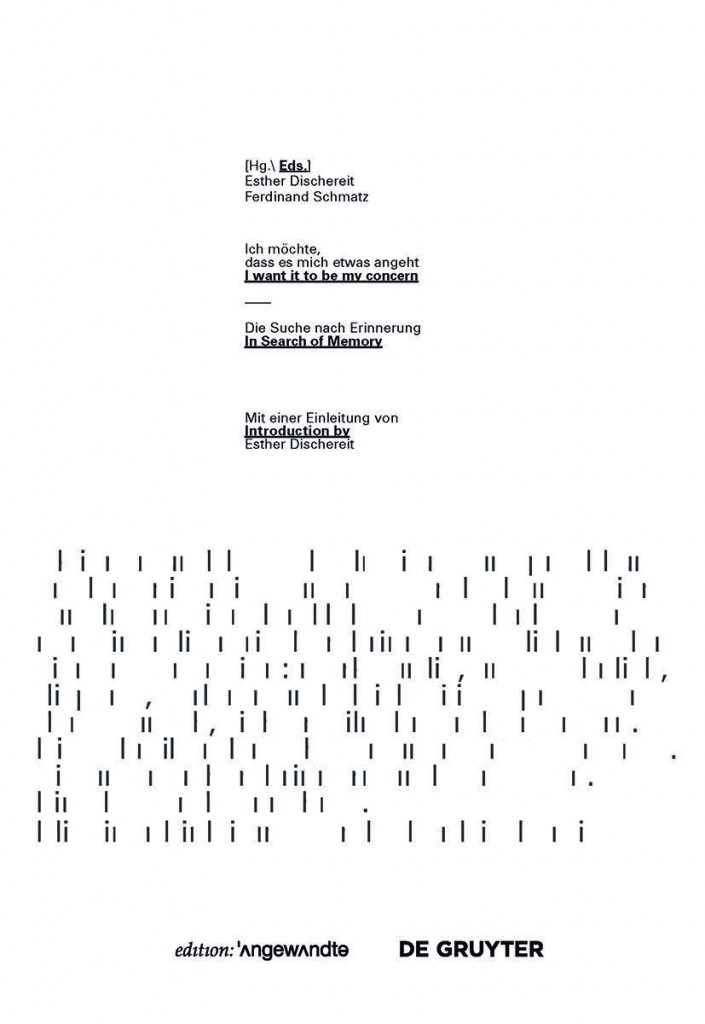
![DieStadtohneJuden[2]](http://theviennaproject.org/wp-content/uploads/2011/04/DieStadtohneJuden21-999x1024.jpg)
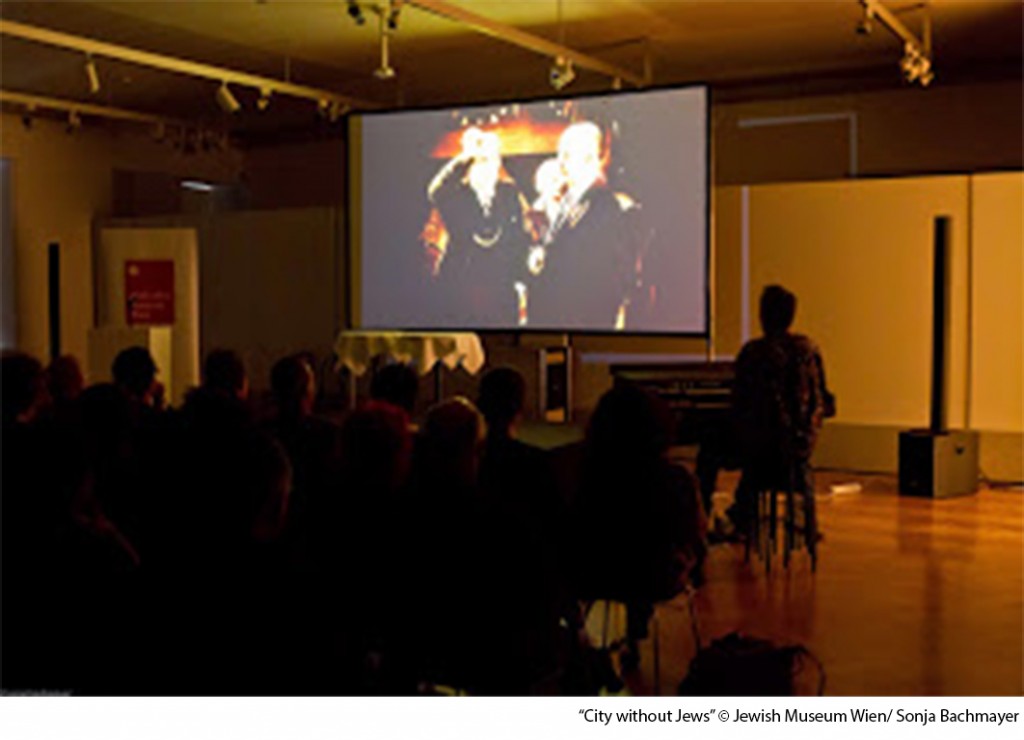
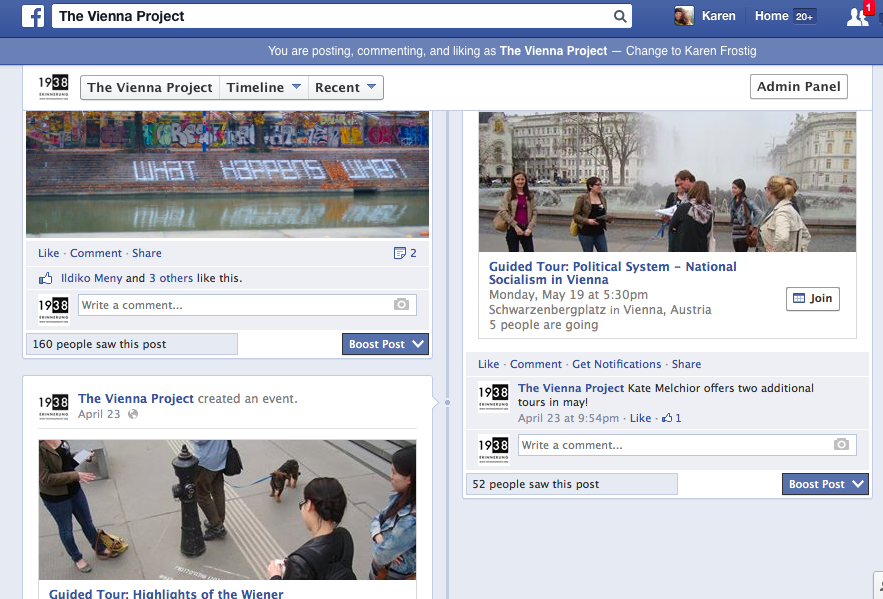




Comments on this entry are closed.